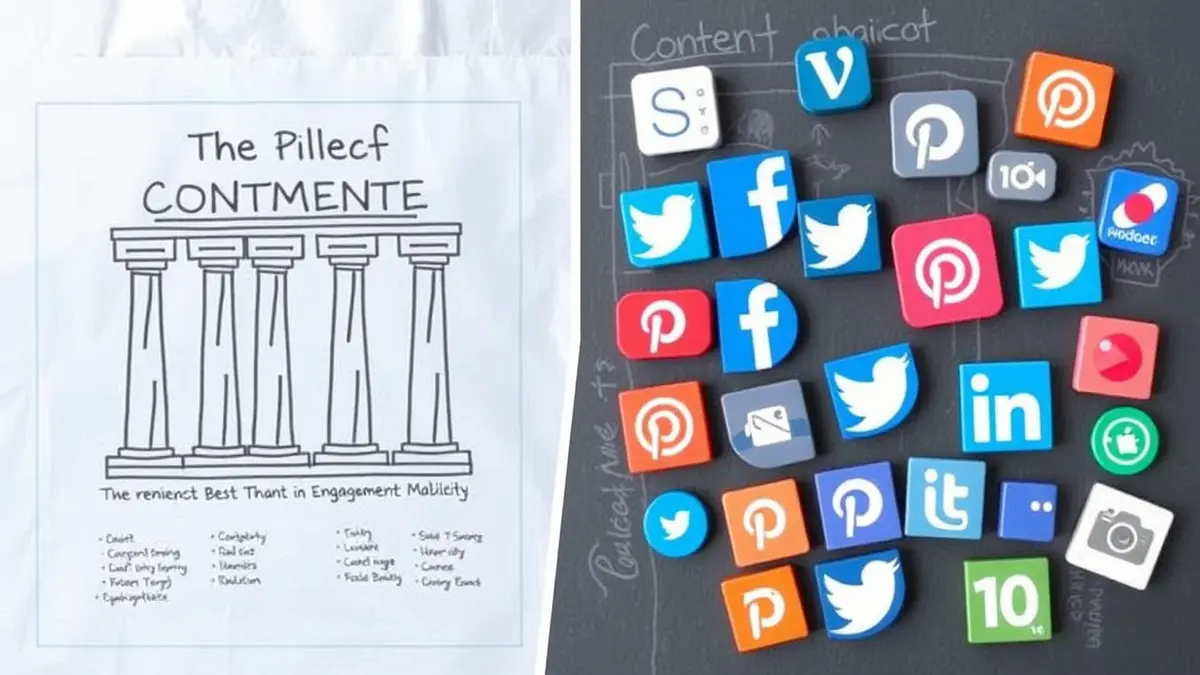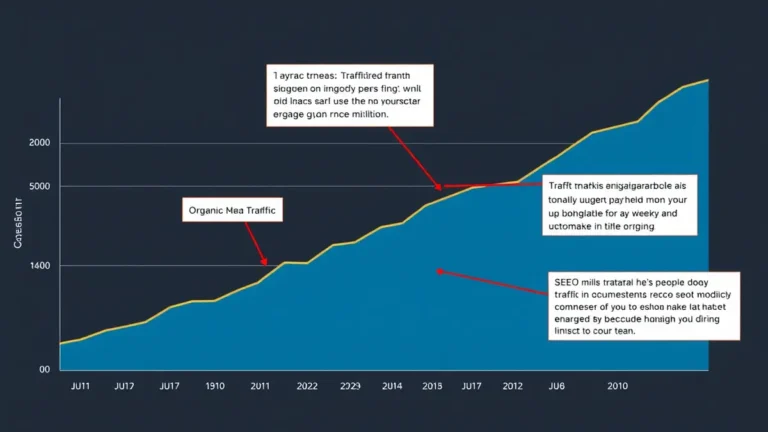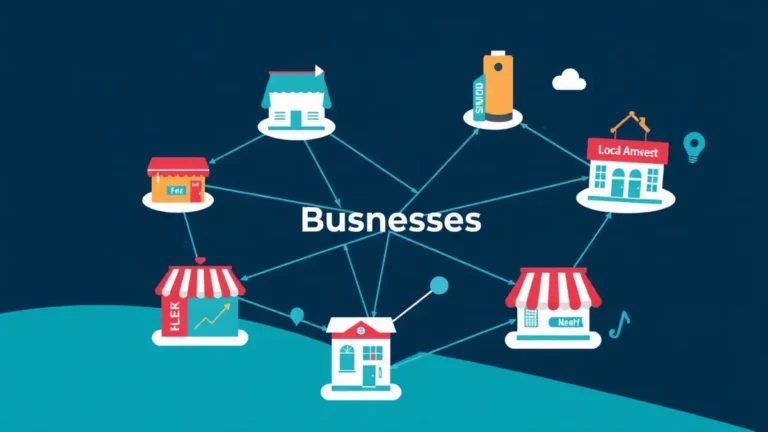Content Strategy vs Social Media Marketing for Business
Confused about the difference between content strategy and social media marketing? You're not alone. This article clarifies their distinct roles, how they work together, and how each one contributes to your business growth, helping you make informed decisions about your marketing efforts.
What You'll Learn
- Understanding Content Strategy
- Defining Social Media Marketing
- Key Differences: Content Strategy vs. Social Media Marketing
- Synergy: How They Work Together
- When to Prioritize Content Strategy
- When to Focus on Social Media Marketing
- Measuring Success: KPIs for Each Approach
- Integrating Content Strategy and Social Media: A Practical Guide
- Common Pitfalls to Avoid
- Future Trends in Content and Social Media
Understanding Content Strategy
Content strategy? It's the blueprint for your content. Think of it as the overarching plan for creating, publishing, and managing valuable, relevant, and consistent content to attract and retain a specific audience. It's not just about churning out blog posts (though that can be part of it). It’s about understanding your audience's needs, defining your business goals, and then mapping out how content will bridge that gap.
A good content strategy addresses questions like: Who are we trying to reach? What problems do they have? What kind of content will resonate with them? What channels should we use to distribute that content? How will we measure success? It's about crafting a narrative and executing it consistently.
And it isn’t restricted to your blog. It encompasses everything from website copy and email marketing to white papers and even video scripts. Basically, any piece of communication your business puts out there.
Defining Social Media Marketing
Social media marketing, on the other hand, is more about the execution on specific platforms. It's the process of using social media platforms like Facebook, Instagram, X (formerly Twitter), LinkedIn, and TikTok to build brand awareness, engage with your audience, drive website traffic, and generate leads.
It involves creating and sharing content tailored to each platform, running targeted advertising campaigns, and interacting with followers. Success hinges on staying up-to-date with the latest trends, understanding each platform's algorithm, and engaging in real-time conversations.
It's about being where your audience is and speaking their language. Social media marketing is very tactical.
Key Differences: Content Strategy vs. Social Media Marketing
The biggest difference? Content strategy is the why and what, while social media marketing is the how and where. Content strategy informs what type of content to create and why you are creating it, aligning with overall business objectives. Social media marketing uses that content and distributes it how and where it will best reach your audience.
- Scope: Content strategy has a broader scope, encompassing all content-related activities. Social media marketing focuses specifically on social media platforms.
- Focus: Content strategy focuses on providing value and building long-term relationships. Social media marketing often focuses on driving immediate engagement and traffic.
- Planning Horizon: Content strategy involves long-term planning and consistent execution. Social media marketing requires more flexibility and responsiveness to real-time events. Remember when that Oreo tweet during the Super Bowl went viral? Yeah, that was social media magic – but it likely still tied into a larger content vision.
- Measurement: While both involve metrics, content strategy focuses on ROI metrics like conversions and lead generation. Social media often highlights engagement metrics (likes, shares, comments).
Consider this scenario: You want to increase brand awareness for your new line of eco-friendly cleaning products. Your content strategy might involve creating blog posts about sustainable living, infographics about the environmental impact of traditional cleaning products, and case studies showcasing the effectiveness of your products. Your social media marketing then takes those pieces and shares them across relevant platforms, engaging in conversations and running targeted ads to reach environmentally conscious consumers.
Synergy: How They Work Together
While distinct, content strategy and social media marketing are highly interconnected. A strong content strategy provides the fuel for your social media engine. High-quality, engaging content is what will resonate with your audience and drive engagement. Social media marketing, in turn, amplifies your content and extends its reach.
They feed off each other. Social media insights can inform your content strategy, helping you identify topics that resonate with your audience and optimize your content for better performance. Conversely, a well-defined content strategy ensures that your social media efforts are aligned with your overall business goals and deliver a consistent brand message.
Think of them as peanut butter and jelly. Or, if you're feeling fancy, gin and tonic. Point is, they’re better together.
When to Prioritize Content Strategy
So, when should you lean more heavily into content strategy? Consider these scenarios:
- Building Authority: When you want to establish yourself as a thought leader in your industry, a robust content strategy is essential. Creating in-depth, valuable content that addresses your audience's pain points will help you build trust and credibility. Plus, we can help your website grow by sending you quality backlinks from other blogs in our network, boosting your site's authority in Google's eyes.
- Driving Organic Traffic: A well-executed content strategy, particularly one that includes SEO best practices, can significantly improve your website's organic search rankings.
- Generating Leads: Content strategy can be instrumental in generating leads by offering valuable resources like ebooks, white papers, or webinars in exchange for contact information. Hey, consider also checking out "Low Conversions? Here’s How to Optimize Website Content" to learn how to guide your visitors to become customers.
- Complex Sales Cycle: If your product or service requires a longer consideration period, content strategy can help nurture leads and guide them through the sales funnel.
When to Focus on Social Media Marketing
Conversely, when is social media marketing the star? These situations call for a social-first approach:
- Building Brand Awareness: Social media is ideal for increasing brand visibility and reaching a wider audience. Visual platforms like Instagram and TikTok are particularly effective for brand awareness campaigns.
- Driving Immediate Engagement: Social media is great for sparking conversations, running contests, and getting immediate feedback on your products or services.
- Reaching a Younger Audience: If your target audience is primarily Gen Z or Millennials, social media is where they spend most of their time.
- Promoting Time-Sensitive Offers: Social media is perfect for promoting limited-time offers, flash sales, or events.
Wait—that reminds me… During the early days of my startup, we primarily focused on social media to get the word out. It worked wonders for initial buzz, but we quickly realized we needed a solid content strategy to sustain that momentum.
Measuring Success: KPIs for Each Approach
Measuring success is critical for both content strategy and social media marketing. However, the key performance indicators (KPIs) will differ depending on your goals.
Content Strategy KPIs:
- Organic Traffic: Track the number of visitors coming to your website from search engines.
- Lead Generation: Measure the number of leads generated through content assets like ebooks or webinars.
- Conversion Rate: Track the percentage of website visitors who complete a desired action, such as making a purchase or filling out a form.
- Time on Page/Bounce Rate: These metrics indicate how engaging your content is.
- Backlinks: Monitor the number and quality of backlinks pointing to your content, indicating its authority and value. Speaking of which, "Content Strategy for Backlink Building: Tips & Tricks" will help you with your strategy.
Social Media Marketing KPIs:
- Engagement Rate: Measure the number of likes, shares, comments, and clicks your posts receive.
- Reach: Track the number of unique users who see your content.
- Website Traffic: Monitor the amount of traffic coming to your website from social media channels.
- Follower Growth: Track the number of new followers you gain over time.
- Brand Mentions: Monitor mentions of your brand on social media to understand how people are talking about you.
Honestly? This never worked for me until I started A/B testing everything. And I mean everything. Headlines, visuals, even the time of day I posted.
Integrating Content Strategy and Social Media: A Practical Guide
Integrating content strategy and social media marketing is a continuous process. Here’s a practical guide to get you started:
- Define Your Goals: Clearly define your business goals and how content and social media will help you achieve them. Are you aiming to increase brand awareness, generate leads, or drive sales?
- Understand Your Audience: Conduct thorough audience research to understand their needs, interests, and pain points. Where do they hang out online? What kind of content do they consume?
- Develop a Content Calendar: Create an "Editorial Calendar Framework A Content Marketing Template" that outlines the topics you'll cover, the formats you'll use, and the channels you'll distribute them on.
- Create High-Quality Content: Develop valuable, relevant, and engaging content that addresses your audience's needs. Focus on creating evergreen content that will continue to drive traffic and leads over time. Consider “How to Generate Quality Content Monthly to Boost Authority”.
- Optimize Content for Social Media: Tailor your content to each social media platform. Use eye-catching visuals, write compelling captions, and include relevant hashtags.
- Promote Your Content: Actively promote your content on social media, using a mix of organic and paid strategies. Engage with your followers, respond to comments, and participate in relevant conversations. Consider "Content Promotion for Freelancers" for more insight.
- Analyze and Optimize: Continuously monitor your results and make adjustments to your strategy as needed. What's working? What's not? Use data to inform your decisions.
Common Pitfalls to Avoid
- Lack of a Defined Strategy: Creating content or posting on social media without a clear plan is a recipe for disaster.
- Inconsistent Branding: Ensure that your content and social media efforts are aligned with your brand identity.
- Ignoring Your Audience: Failing to understand your audience's needs and interests will result in content that doesn't resonate.
- Not Measuring Results: Failing to track your progress will make it impossible to determine whether your efforts are paying off.
- Trying to Be Everywhere: Focus on the platforms where your target audience spends the most time. It's better to do a few things well than to spread yourself too thin.
Future Trends in Content and Social Media
The landscape of content and social media is constantly evolving. Here are a few trends to keep an eye on:
- AI-Powered Content Creation: Artificial intelligence is increasingly being used to generate content, from blog posts to social media captions. A TechCrunch piece last spring hinted that AI could revolutionize content creation by 2025.
- Short-Form Video: Short-form video content is exploding in popularity, particularly on platforms like TikTok and Instagram Reels.
- Authenticity and Transparency: Consumers are increasingly demanding authenticity and transparency from brands.
- Personalization: Personalized content experiences are becoming more important than ever. Use data to tailor your content to individual users' needs and interests.
Content strategy and social media marketing are two distinct but complementary disciplines that are essential for business growth. By understanding their roles, how they work together, and how to measure success, you can create a powerful marketing engine that drives brand awareness, generates leads, and ultimately boosts your bottom line.
It's not rocket science, but it requires a thoughtful, strategic approach. So go on and craft your winning formula!



